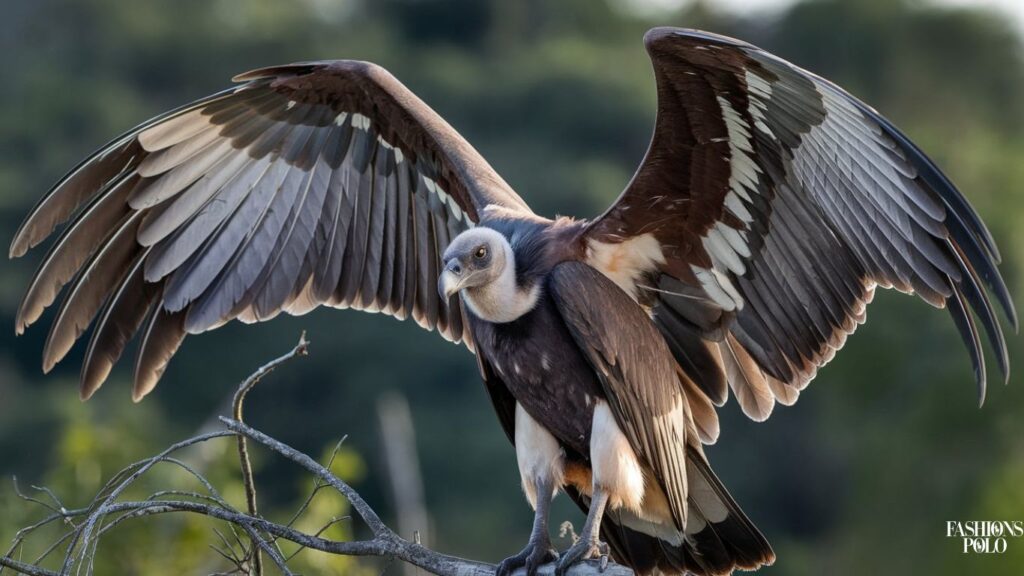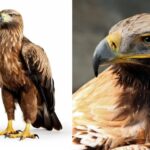Cinereous Vulture Facts
The Cinereous Vulture is a massive bird of prey. It’s found across Europe and Asia. This vulture is known for its dark plumage. It plays a crucial role in ecosystems. The bird is a scavenger, cleaning up carcasses.
Cinereous Vultures have keen eyesight. They can spot food from great heights. These birds are social creatures. They often feed in groups. The species faces numerous threats today. Conservation efforts are crucial for its survival.
Cinereous Vulture Size
Cinereous Vultures are impressively large. They’re among the world’s heaviest flying birds. Their wingspan is remarkable. Let’s look at their size details:
| Measurement | Range |
| Wingspan | 2.5 – 3.1 meters (8.2 – 10.2 feet) |
| Body Length | 98 – 120 cm (3.2 – 3.9 feet) |
| Weight | 7 – 14 kg (15.4 – 30.9 pounds) |
These vultures have a massive presence in the sky. Their size helps them soar effortlessly. They can cover vast distances with ease. Their large size also aids in dominance at feeding sites.
Read This Blog : Meet Beetlejuice’s Father – Christopher Palid
Cinereous Vulture Appearance
Cinereous Vultures have a distinctive look. Their plumage is dark brown, nearly black. The head is bare, with bluish-gray skin. A ruff of feathers circles the neck. Their beak is large and hooked. It’s perfect for tearing flesh.
The bird’s eyes are dark brown. Strong, yellow legs support their heavy body. In flight, their wings appear broad and rectangular. Their tail is short and wedge-shaped. These features make them easily identifiable in the wild.
Cinereous Vulture Sexual Dimorphism
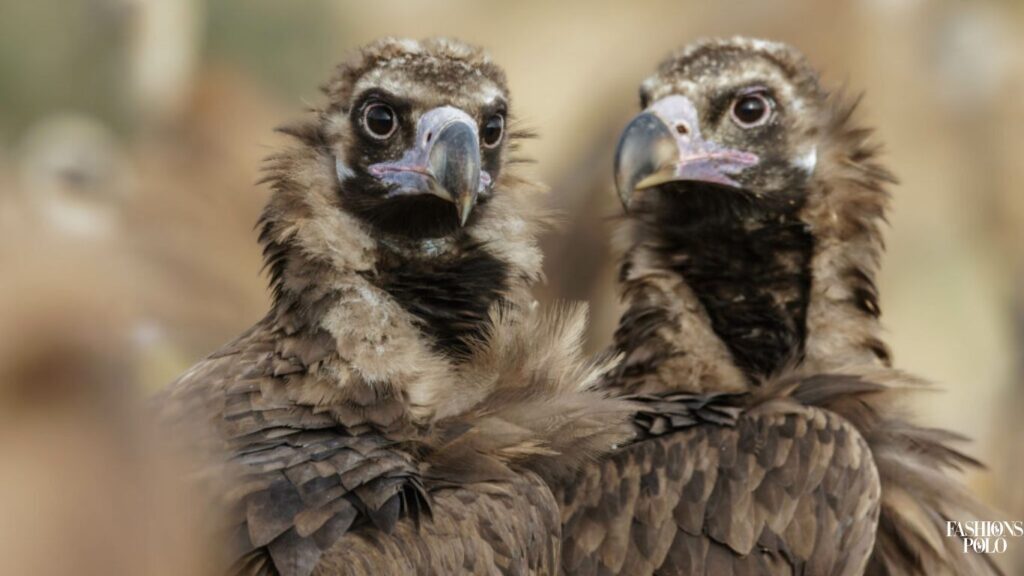
Sexual dimorphism in Cinereous Vultures is minimal. Both sexes look very similar. Females are slightly larger than males. This size difference is often hard to notice. Their plumage coloration is identical.
Behavior patterns are also similar between sexes. During breeding, roles are shared equally. This lack of dimorphism makes sexing difficult in the field. Genetic testing is often needed for accurate sex determination.
Cinereous Vulture Lifespan
Cinereous Vultures have a long lifespan. In the wild, they can live up to 30-40 years. Captive birds may live even longer. Their longevity is due to several factors. They have few natural predators. Their size deters most threats.
A slow reproductive rate contributes to their long life. These birds reach sexual maturity late. It can take 5-6 years before they breed. Their lifespan allows for multiple breeding seasons. This helps maintain population stability. However, human threats can shorten their lives significantly.
Cinereous Vulture Scientific Name and Taxonomy
The scientific name is Aegypius monachus. It belongs to the family Accipitridae. This family includes eagles, hawks, and kites. The genus Aegypius is monotypic. It means it contains only this species.
The name “monachus” refers to a monk. It’s due to the bird’s dark, hood-like appearance. Taxonomically, it’s closely related to other Old World vultures. However, it’s distinct enough to be in its own genus.
Cinereous Vulture Distribution
Cinereous Vultures have a wide distribution range. They’re found across Eurasia. Their range extends from Spain to Korea. Key populations exist in:
Spain
Greece
Turkey
Iran
Central Asia
Mongolia
China
They’ve become extinct in many areas. Reintroduction efforts are ongoing in some regions. Their distribution is patchy due to habitat loss. Climate change may affect future distribution patterns.
Read Also This : Dianaperuza: Unfolding its history and meaning in a different context
Cinereous Vulture Habitat
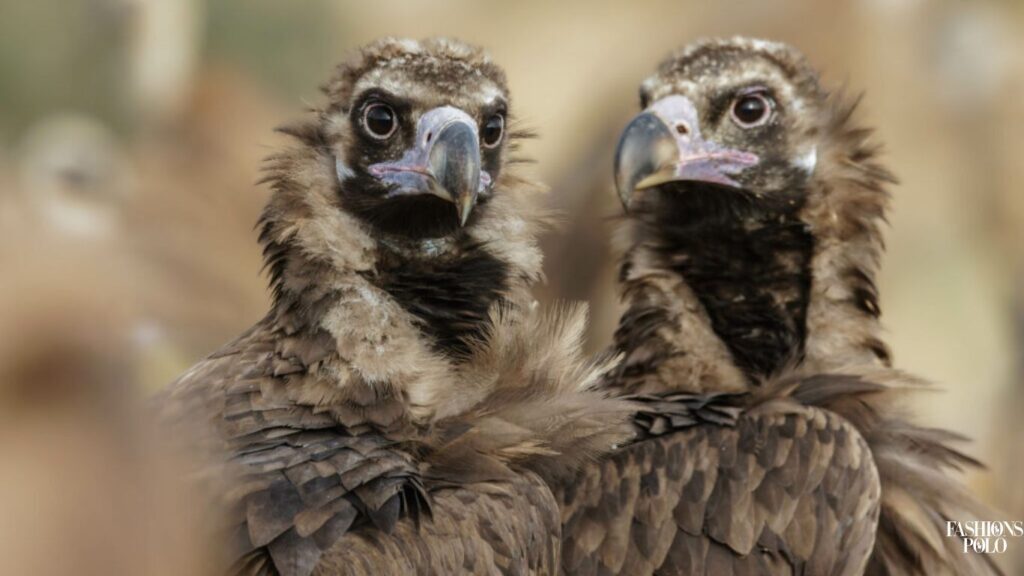
These vultures prefer diverse habitats. They’re found in forests and mountainous regions. Open landscapes are also suitable. Key habitat features include:
- Areas with tall trees for nesting
- Open spaces for foraging
- Rocky cliffs in some regions
- Proximity to grazing areas for livestock
They adapt to various altitudes. Cinereous Vultures can live from sea level to 4,500 meters. Habitat choice is influenced by food availability. Human activities increasingly impact their habitat selection.
Cinereous Vulture Population Size
The global population is estimated at 7,800-10,500 pairs. This number fluctuates across regions. Spain has the largest European population. Asia hosts significant numbers, especially in Mongolia. Population trends vary:
| Region | Population Trend |
| Europe | Increasing |
| Central Asia | Stable |
| East Asia | Decreasing |
Conservation efforts have helped some populations recover. However, many areas still see declines. Accurate counting is challenging due to the bird’s vast range.
Cinereous Vulture Behavior
Cinereous Vultures are generally solitary. They gather in groups at feeding sites. These birds are diurnal, active during the day. They spend much time soaring on thermals. This behavior helps them search for food efficiently. Cinereous Vultures are non-aggressive towards other vultures. They often feed alongside other scavenger species. During breeding season, pairs become territorial. They fiercely defend their nesting sites. These vultures communicate through various vocalizations and body postures.
Cinereous Vulture Feeding and Diet
The diet consists mainly of carrion. They prefer large mammal carcasses. Cinereous Vultures are often the first to find carcasses. Their feeding habits include:
- Tearing flesh with strong beaks
- Focusing on soft tissues and organs
- Consuming bones when food is scarce
They can go for long periods without eating. When food is abundant, they gorge themselves. This adaption helps during food scarcity. Cinereous Vultures play a crucial role in ecosystem health. They prevent disease spread by removing carcasses quickly.
Cinereous Vulture Breeding
Breeding behavior is complex and ritualized. Cinereous Vultures are monogamous. Pairs often mate for life. The breeding cycle includes:
- Courtship displays in the air
- Nest building, usually in tall trees
- Laying of a single egg
- Shared incubation for about 55 days
- Both parents caring for the chick
Chicks fledge after 110-120 days. They depend on parents for several months after. Breeding success is often low. Only about 50% of pairs breed successfully each year.
Cinereous Vulture Migration
Cinereous Vultures are mostly sedentary. Some populations show partial migration. Factors influencing movement include:
- Food availability
- Weather conditions
- Age of the bird
Young birds tend to wander more. Adults usually stay near breeding sites year-round. In harsh winters, some birds move to warmer areas. These movements are not true migrations. They’re more like seasonal dispersals. Tracking studies reveal complex movement patterns. These vary greatly among individuals and populations.
Cinereous Vulture Conservation Status
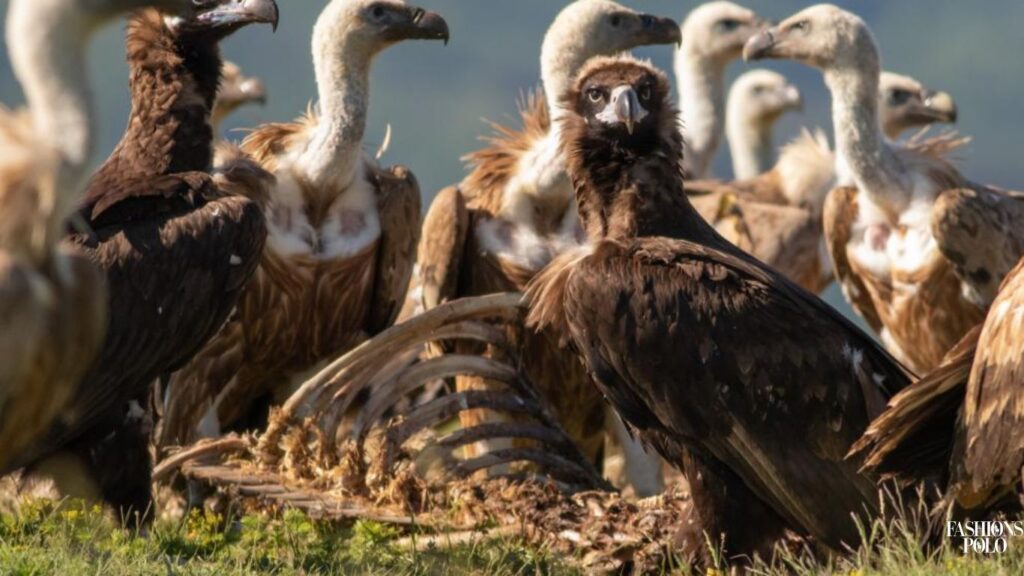
The IUCN lists the Cinereous Vulture as Near Threatened. This status reflects ongoing threats. Conservation efforts have shown some success. Key aspects of their conservation include:
- Habitat protection
- Anti-poisoning campaigns
- Supplementary feeding programs
- Captive breeding and reintroduction
Legal protection varies across their range. International cooperation is crucial for effective conservation. Climate change poses new challenges for conservation efforts.
Cinereous Vulture Threats
Cinereous Vultures face numerous threats. These include:
Habitat loss due to deforestation
Poisoning, both intentional and accidental
Collision with power lines and wind turbines
Food scarcity due to changing agricultural practices
Persecution by humans
Poisoning is perhaps the most severe threat. It often occurs when farmers target predators. Lead poisoning from hunting ammunition is also a concern. Human disturbance at nesting sites impacts breeding success. Climate change may alter habitat suitability in the future.
Frequently Asked Question
What does a Cinereous Vulture eat?
Cinereous Vultures primarily eat carrion, focusing on large mammal carcasses. They prefer soft tissues and organs but can consume bones when necessary.
How long do Cinereous Vultures live?
In the wild, Cinereous Vultures can live up to 30-40 years. Captive individuals may live even longer due to protection from natural threats.
Are Cinereous Vultures endangered?
Cinereous Vultures are currently listed as Near Threatened by the IUCN. While not endangered, they face significant threats and require conservation efforts.
How big is a Cinereous Vulture’s wingspan?
A Cinereous Vulture’s wingspan ranges from 2.5 to 3.1 meters (8.2 to 10.2 feet), making them one of the largest flying birds in the world.
Do Cinereous Vultures migrate?
Most Cinereous Vultures are sedentary, but some populations show partial migration or seasonal dispersal, especially in response to food availability and weather conditions.
Conclusion
The Cinereous Vulture is a remarkable species. It plays a vital role in ecosystems. These birds face numerous challenges today. Conservation efforts are crucial for their survival. Their impressive size and unique adaptations make them fascinating subjects of study.
As scavengers, they provide essential ecosystem services. The future of Cinereous Vultures depends on human actions. Protecting their habitats and addressing threats are key.
With continued efforts, these magnificent birds can thrive for generations to come. Their preservation is not just about saving a species. It’s about maintaining the balance of nature in their vast range across Eurasia.

Brook with 5 years in celebrity styling. Transforms A-list looks into wearable trends.
Expert in red carpet glamour and everyday chic for the stars.

